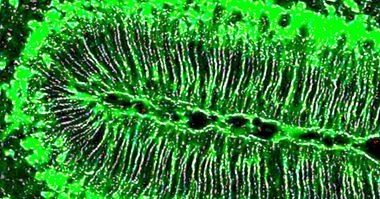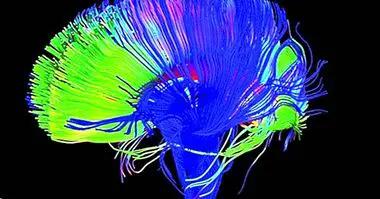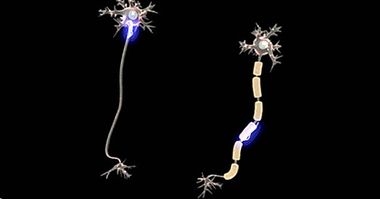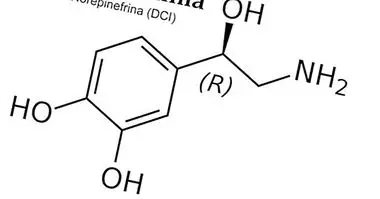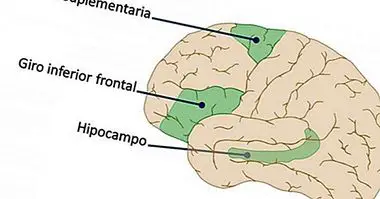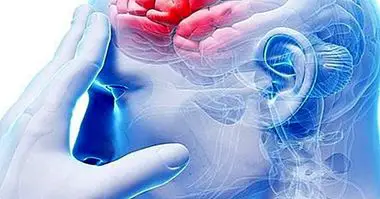Testosterone: its functions and effects in men and women
Hormones are a series of substances produced by the endocrine glands and have numerous functions in the body. One of the best known is testosterone , a predominantly male hormone, but also synthesized in women.
Despite being one of the most studied hormones, there are many activities of the organism in which it is involved, as well as its health benefits and the differences between men and women when exercising their action.
- Related article: "Types of hormones and their functions in the human body"
What is testosterone and what is it for?
Testosterone is a sex hormone, classified as a steroid, traditionally associated with the male sex. While This substance constitutes the main male hormone and occurs mainly in the testes, the ovaries also have the ability to manufacture them in very small amounts.
This hormone, present even before birth, is in charge of male sexual development , favoring the growth of the male sexual organs, the growth of the musculature, the appearance of body hair and the development of the severity of the voice.
Once the man has completely developed, the adult phase comes, the testosterone maintains its activity, being a participant in many processes and bodily functions. This includes, from the mechanisms most obviously related to it, such as sexual ability, desire and the formation of sperm ; to others in which their role is traditionally less known.
These activities of the organism in which testosterone is involved include:
- Helps to develop muscle toning and facilitates recovery after aerobic and anaerobic exercises.
- It potentiates the production of red blood cells.
- Favors the memory processes .
- Improves kidney function.
- Prevents the development of diseases such as osteoporosis.
- Increase bone mineral density.
How does testosterone work in women?
As previously mentioned, testosterone is a mainly male hormone, its plasma concentration being ten times higher in men than in women. However, the female sex is much more sensitive to the effects of this.
Broadly speaking, the effects of testosterone in women are related to certain aspects of behavior and their physical appearance. As in men, testosterone is highly involved in libido levels and sexual desire, to the point of qualitatively improving sexual relations.
On the other hand, this hormone also cooperates in the development of bones, providing a stronger bone structure and a robust and resistant muscle mass.
However, there are many other functions and female body dynamics in which testosterone is involved, increasing more and more the number of empirical studies that try to establish these associations.
For example, one of these studies conducted by the University of Florida revealed data in favor of the hypothesis that in many cases when women unconsciously perceive that other women are ovulating , increase their testosterone peaks, increasing levels of sexual desire and causing more intense orgasms. This fact contains an evolutionary component, whereby when a woman noticed that another was in a fertile state it became a rival when it came to reproducing, so that the increase in testosterone facilitated sexual relations with men in the group .
Finally, other studies related to human sexual behavior have found a series of associations between high levels of testosterone and an increase in masturbation, as well as an increase in behaviors considered risky.
All this means that the influence of testosterone on sexual and other non-sexual behaviors in both men and women is evidence. However, there is still much to investigate to be able to affirm it forcefully.
- You may be interested: "Differences between the libido of the two sexes"
Your health benefits
Throughout the article it has been commented, on several occasions, that the effects of testosterone go beyond those related to sexual desire and performance. In addition, it also exerts a great influence on Physical performance, production and distribution of fat and cardiovascular functioning .
1. Physical energy and fatigue
The levels of testosterone are directly related are the physical sensation of fatigue and fatigue, so the lower the testosterone levels in a person, the greater the feeling of fatigue.
2. Body distribution of fat
Numerous studies have established evidence that relate low testosterone levels to a greater amount of body fat , which tends to accumulate especially in the abdomen. In this way, a high body mass index, together with a high abdominal contour can be synonymous with an alteration in the production of testosterone.
3. Muscle mass
Testosterone is included in the group of anabolic hormones, so the consumption of free testosterone favors the genesis of muscle proteins, which enhance the development of muscle volume.
4. Cardiovascular functioning
Traditionally, low levels of testosterone have been considered as a risk factor when developing hypertension. In the same way, an optimal levels of this hormone favors the control of triglycerides, also regulating cholesterol problems.
What happens when it is produced in excess of this hormone?
High levels of testosterone can cause a large number of physical and behavioral changes in both men and women.
1. Consequences in men
High blood testosterone levels in men may be due to diseases such as hyperthyroidism, a tumor of the adrenal gland or as consequences of an excessive consumption of alcohol, tobacco and steroids.
As a consequence, the following symptomatology may develop:
- Increase of the size of the prostate and problems to urinate.
- Increase in the production of body fat.
- Acne problems
- Increased body hair growth.
- Fertility problems due to a decrease in sperm production.
- Alterations of mood and mood changes.
- Aggressiveness and violent behavior .
- Increased risk of developing prostate cancer.
- Cardiovascular problems.
2. Consequences in women
In the same way, abnormally high levels of testosterone in women, or hyperandrogenism, organs for conditions such as polycystic ovaries or adrenal diseases also can trigger a series of physical and health alterations . These include:
- Alterations in the menstrual cycle such as oligomenorrhea.
- Acne and skin problems.
- Hirsutism, or increase in body hair.
- Hair loss or alopecia .
- Symptoms of virilization such as clitoral enlargement, severe voice or atrophy of the breasts.


